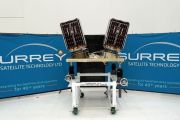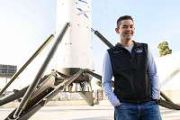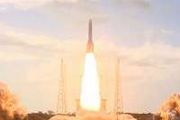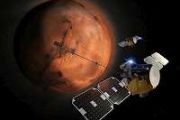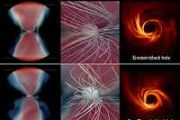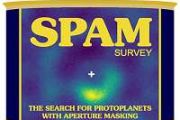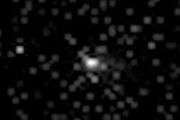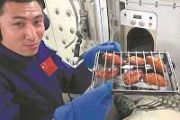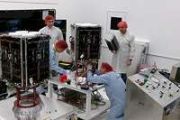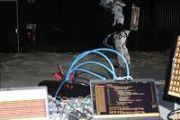
Copernical Team
China may boost accuracy of its hypersonic weapons via AI technology
 Chinese PLA researchers are reportedly seeking to improve the accuracy of the country's hypersonic delivery systems via artificial intelligence, according to the South China Morning Post.
Chinese Foreign Ministry spokesman Zhao Lijian on Monday refuted a report by the Financial Times saying that the country conducted a hypersonic missile test in August. First, it was not a missile but a sp
Chinese PLA researchers are reportedly seeking to improve the accuracy of the country's hypersonic delivery systems via artificial intelligence, according to the South China Morning Post.
Chinese Foreign Ministry spokesman Zhao Lijian on Monday refuted a report by the Financial Times saying that the country conducted a hypersonic missile test in August. First, it was not a missile but a sp NEID Spectrometer Lights Up Path to Exoplanet Exploration
 As NASA expands its quest to discover exoplanets - planets beyond our solar system - it also grows its toolbox. Over the summer, a new tool called NEID (pronounced NOO-id) delivered its first batch of data on the nearest and best-studied star, our Sun.
The NEID spectrometer, which will help locate and characterize new worlds, observes the sky from Kitt Peak National Observatory in Arizona.
As NASA expands its quest to discover exoplanets - planets beyond our solar system - it also grows its toolbox. Over the summer, a new tool called NEID (pronounced NOO-id) delivered its first batch of data on the nearest and best-studied star, our Sun.
The NEID spectrometer, which will help locate and characterize new worlds, observes the sky from Kitt Peak National Observatory in Arizona. China's Chang'e-5 mission offers new insights into evolution of Moon
 Chinese researchers have studied the lunar samples brought back by the Chang'e-5 mission and dated the youngest rock on the Moon at around 2 billion years in age, extending the "life" of lunar volcanism 800-900 million years longer than previously known.
The study, conducted mainly by a research team at the Institute of Geology and Geophysics (IGG), Chinese Academy of Sciences (CAS), was p
Chinese researchers have studied the lunar samples brought back by the Chang'e-5 mission and dated the youngest rock on the Moon at around 2 billion years in age, extending the "life" of lunar volcanism 800-900 million years longer than previously known.
The study, conducted mainly by a research team at the Institute of Geology and Geophysics (IGG), Chinese Academy of Sciences (CAS), was p China's lunar samples reveal new type of basalt
 An analysis of moon rocks brought back to Earth by China's Chang'e-5 mission suggests the samples are a new type of lunar basalt, different from those collected during previous Apollo and Luna missions.
Researchers from the National Astronomical Observatories of the Chinese Academy of Sciences (NAOC) analyzed rock particles 10 to 500 microns (a quarter the thickness of a credit card) in si
An analysis of moon rocks brought back to Earth by China's Chang'e-5 mission suggests the samples are a new type of lunar basalt, different from those collected during previous Apollo and Luna missions.
Researchers from the National Astronomical Observatories of the Chinese Academy of Sciences (NAOC) analyzed rock particles 10 to 500 microns (a quarter the thickness of a credit card) in si DART arrives at Vandenberg for a late November launch
 Just two days after leaving the Johns Hopkins Applied Physics Laboratory (APL) in Laurel, Maryland, in a specialized container carefully strapped to the deck of a semi-trailer truck, NASA's Double Asteroid Redirection Test (DART) spacecraft arrived in California - its final stop here on Earth.
The truck, spacecraft and a small motorcade of APL engineers and technicians pulled into Vandenbe
Just two days after leaving the Johns Hopkins Applied Physics Laboratory (APL) in Laurel, Maryland, in a specialized container carefully strapped to the deck of a semi-trailer truck, NASA's Double Asteroid Redirection Test (DART) spacecraft arrived in California - its final stop here on Earth.
The truck, spacecraft and a small motorcade of APL engineers and technicians pulled into Vandenbe Astronomers detect signs of an atmosphere stripped from a planet during giant impact
 Young planetary systems generally experience extreme growing pains, as infant bodies collide and fuse to form progressively larger planets. In our own solar system, the Earth and moon are thought to be products of this type of giant impact. Astronomers surmise that such smashups should be commonplace in early systems, but they have been difficult to observe around other stars.
Now astronom
Young planetary systems generally experience extreme growing pains, as infant bodies collide and fuse to form progressively larger planets. In our own solar system, the Earth and moon are thought to be products of this type of giant impact. Astronomers surmise that such smashups should be commonplace in early systems, but they have been difficult to observe around other stars.
Now astronom NASA challenges students to design moon-digging robots
 NASA seeks young engineers to help design a new robot concept for an excavation mission on the Moon. The Lunabotics Junior Contest is open to K-12 students in U.S. public and private schools, as well as home-schoolers.
The competition, which is a collaboration between NASA and Future Engineers, asks students to design a robot that digs and moves lunar soil, called regolith, from an area of
NASA seeks young engineers to help design a new robot concept for an excavation mission on the Moon. The Lunabotics Junior Contest is open to K-12 students in U.S. public and private schools, as well as home-schoolers.
The competition, which is a collaboration between NASA and Future Engineers, asks students to design a robot that digs and moves lunar soil, called regolith, from an area of Rhea Space Activity Receives USAF Contract to Enhance Domain Awareness in Cislunar Space
 Rhea Space Activity (RSA) has been selected by the United States Air Force (USAF) AFWERX program for a Phase II Small Business Innovation Research (SBIR) award to continue its effort in the development of an enhanced Lunar Intelligence (LUNINT) Dashboard in support of Space Domain Awareness (SDA).
The award marks an essential next-step for RSA's SDA program. During its recently completed P
Rhea Space Activity (RSA) has been selected by the United States Air Force (USAF) AFWERX program for a Phase II Small Business Innovation Research (SBIR) award to continue its effort in the development of an enhanced Lunar Intelligence (LUNINT) Dashboard in support of Space Domain Awareness (SDA).
The award marks an essential next-step for RSA's SDA program. During its recently completed P NASA announces winners of Deep Space Food Challenge
 Variety, nutrition, and taste are some considerations when developing food for astronauts. For NASA's Deep Space Food Challenge, students, chefs, small businesses, and others whipped up novel food technology designs to bring new solutions to the table.
NASA has selected 18 U.S. teams to receive a total of $450,000 for ideas that could feed astronauts on future missions. Each team will rece
Variety, nutrition, and taste are some considerations when developing food for astronauts. For NASA's Deep Space Food Challenge, students, chefs, small businesses, and others whipped up novel food technology designs to bring new solutions to the table.
NASA has selected 18 U.S. teams to receive a total of $450,000 for ideas that could feed astronauts on future missions. Each team will rece NASA looks beyond SpaceX, Boeing contracts for space station commutes
 NASA posted a formal request on a government website Wednesday, seeking companies that could provide astronaut transportation vehicles to the International Space Station by 2027.
SpaceX has provided such transport services with the Crew Dragon capsule since May 2020, while Boeing also holds a contract. But Boeing is four years behind schedule in delivering on its contract, as the compan
NASA posted a formal request on a government website Wednesday, seeking companies that could provide astronaut transportation vehicles to the International Space Station by 2027.
SpaceX has provided such transport services with the Crew Dragon capsule since May 2020, while Boeing also holds a contract. But Boeing is four years behind schedule in delivering on its contract, as the compan 

